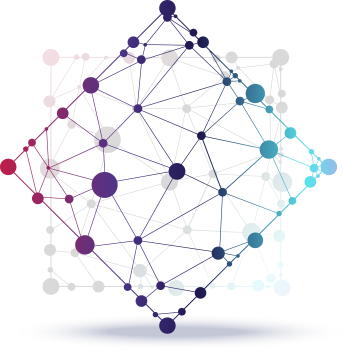- Momentum Shifts: Examining the Core of News Today and its Global Impact.
- The Rise of Digital News Consumption
- Social Media’s Impact on Information Dissemination
- The Role of Fact-Checking Organizations
- Challenges to Journalistic Integrity
- The Future of ‘News Today’
Momentum Shifts: Examining the Core of News Today and its Global Impact.
The concept of ‘news today‘ has dramatically evolved in the 21st century, moving far beyond traditional newspapers and television broadcasts. We now live in an era of instant information, where events unfold in real-time and are disseminated globally through a multitude of digital platforms. This constant flow of data presents both opportunities and challenges, demanding a critical approach to information consumption. The immediacy of modern reporting often prioritizes speed over thoroughness, leading to potential inaccuracies and biases. Understanding the dynamics of current events requires navigating this complex landscape and discerning credible sources from those driven by sensationalism or hidden agendas.
The speed with which information travels necessitates a willingness to adapt and re-evaluate perspectives. The very fabric of the media ecosystem is undergoing a continual restructuring driven by technological advancements and altered audience behaviors. Furthermore, citizen journalism and social media play an increasingly significant role in shaping public understanding, introducing both democratization and the proliferation of misinformation. A discerning public is more important than ever in navigating this new media environment and forming informed opinions.
The Rise of Digital News Consumption
Digital news consumption has skyrocketed in recent years, surpassing traditional media outlets in audience reach. This shift is driven largely by convenience, accessibility, and the ability to personalize news feeds. Platforms like Google News, Apple News, and various news aggregator websites curate content from numerous sources, offering readers a diverse range of perspectives. However, this convenience comes with algorithms that can often create ‘filter bubbles’, reinforcing existing beliefs and limiting exposure to opposing viewpoints. The financial implications for traditional journalism are substantial, challenging established business models and impacting the quality of reporting.
One of the key changes this has brought about is the paywall model. Many established news sources now require subscriptions for access to premium content, a necessary move to ensure financial viability but also posing a barrier to access for some individuals. Understanding how these digital platforms operate and the inherent biases within their algorithms is crucial for navigating the information landscape effectively. Here’s a table illustrating the changing media consumption habits:
| Newspaper | 45 | 15 |
| Television | 60 | 35 |
| Online (Desktop) | 30 | 50 |
| Mobile | 10 | 65 |
Social Media’s Impact on Information Dissemination
Social media platforms have become central to how individuals receive and share information. Facebook, Twitter, Instagram, and TikTok all serve as significant sources of current events, often bypassing traditional journalistic gatekeepers. While this allows for instant reporting and citizen journalism, it also creates an environment ripe for the spread of misinformation and ‘fake news’. The speed and virality of social media can amplify inaccurate or misleading content before fact-checkers have a chance to intervene. This presents a significant challenge to public trust in information sources and requires robust media literacy initiatives.
The algorithmic nature of these platforms also plays a role, prioritizing engagement over accuracy. Content that elicits strong emotional responses, regardless of its veracity, tends to gain more traction. This can lead to the polarization of opinions and the erosion of common ground. Consequently, individuals need to be critical consumers of information on social media, cross-referencing claims with reputable sources and being wary of emotionally charged content. There are various techniques to verifying source reliability:
- Check the source’s reputation
- Look for multiple sources reporting the same information
- Be wary of sensational headlines
- Consider the author’s credentials and potential biases.
The Role of Fact-Checking Organizations
In response to the proliferation of misinformation, fact-checking organizations have emerged as vital defenders of journalistic integrity. These independent entities, such as Snopes, PolitiFact, and the Associated Press Fact Check, scrutinize claims made by politicians, public figures, and media outlets, providing evidence-based assessments of their accuracy. Their work is essential for holding those in power accountable and combating the spread of false narratives. However, fact-checking organizations themselves are not immune to criticism, with some accusations of bias or selective fact-checking. It is important to consult multiple sources and critically evaluate their methodologies.
The financial sustainability and political neutrality of fact-checking organizations are critical for maintaining public trust. Funding models should be transparent and diversified to avoid the appearance of influence. Additionally, fact-checkers must adhere to rigorous journalistic standards and avoid making subjective judgments. Here is a comparison of some prominent fact-checking organizations:
| Snopes | Urban Legends, Rumors | Detailed research, source verification |
| PolitiFact | Political Statements | ‘Truth-O-Meter’ ratings, source documentation. |
| AP Fact Check | News and Political Claims | Non-partisan reporting, expert analysis. |
| FactCheck.org | Political claims, ads | Non-partisan, focuses on accuracy |
Challenges to Journalistic Integrity
Several factors contribute to the erosion of public trust in journalism. The decline of local news, driven by economic pressures, has created ‘news deserts’ where communities lack access to reliable information about local issues. This vacuum is often filled by partisan media outlets or social media, exacerbating polarization and undermining civic engagement. Furthermore, the increasing pressure to generate clicks and revenue can incentivize sensationalism and a focus on negative news, at the expense of in-depth reporting. The constant cycle of breaking news also leaves little time for detailed investigation and analysis.
The deliberate spread of disinformation, often orchestrated by foreign actors, poses a significant threat to democratic processes. These campaigns aim to sow discord, undermine trust in institutions, and manipulate public opinion. Combating disinformation requires a multi-pronged approach, including media literacy education, robust fact-checking, and collaboration between government, tech companies, and civil society organizations. A reliance on verifiable sources and a healthy skepticism towards online information are essential skills for navigating the modern information landscape. The strategies to verify information sources can be categorized as:
- Reverse image search
- Website Domain analysis
- Cross-referencing information
- Evaluating source credibility
The Future of ‘News Today’
Looking ahead, the future of ‘news today’ will likely be shaped by further technological innovation. Artificial intelligence (AI) is already being used to automate news gathering, generate headlines, and personalize news feeds. While AI offers the potential to enhance efficiency and improve coverage, it also raises concerns about bias, accuracy, and the displacement of human journalists. The development of immersive technologies, such as virtual reality (VR) and augmented reality (AR), could revolutionize how we experience news, allowing for greater engagement and a deeper understanding of complex issues.
However, the fundamental principles of journalism – accuracy, fairness, and independence – will remain crucial. Maintaining public trust requires a commitment to ethical standards, transparency, and a relentless pursuit of truth. Investing in quality journalism and fostering media literacy are essential for ensuring a well-informed citizenry and a healthy democracy. Ultimately, the responsibility for navigating the information landscape rests with each individual, demanding critical thinking skills and a willingness to seek out diverse perspectives.



